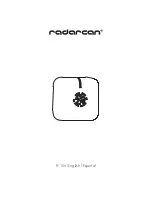
Sentinel V SC and RT Operation Manual
September
2017
EAR-Controlled Technology Subject to Restrictions Contained on the Cover Page.
Page 131
Preventing Biofouling
This section explains how to prevent the buildup of organic sea life (biofouling) on the transducer faces.
Objects deployed within about 100 meters (
≈
328 feet) of the surface are subject to biofouling, especially in
warm, shallow water. Soft-bodied organisms usually cause no problems, but barnacles can cut through the
urethane transducer face causing failure to the transducer and leakage into the Sentinel V ADCP.
The best-known way to control biofouling is cleaning the Sentinel V ADCP transducer faces often. How-
ever, in many cases this is not possible. In that case, coat the entire Sentinel V ADCP with the recom-
mended antifouling paint. Make sure that the paint is applied in an even coat over the transducer faces.
As originally manufactured, the transducer faces have a smooth surface which makes it
inhospitable for most biofouling to develop. Preserving this smooth surface is an effective
way to prevent heavy bio-growth on the transducer faces. However, if an antifouling coating
is desired on the transducer faces, then the faces must be lightly abraded to allow for the
antifouling coating to adhere. As a rule, the surface must be kept smooth unless an
antifouling coating will be applied.
Most EPA approved anti-fouling paint can be used on the housing and the urethane transducer faces.
Contact the antifouling paint manufacturer for preparation and application procedures for this and other
antifoulant paints. Interlux is one source of antifouling paint. Contacting this company is done with the
knowledge that Teledyne RD Instruments is not recommending them, but only offering this as a source
for the anti-fouling paint.
Manufacturer
Contact
Courtalds Finishes
Telephone: +1 (800) 468-7589
Interlux brand paints
http://www.yachtpaint.com/usa/
The following tips are only general recommendations. Always follow the anti-fouling paint manufacturer’s
instructions on how to apply the anti-fouling paint.
1. Transducer Face Surface Preparation - Lightly abrade the surface using Scotch Brite® to remove
gloss. Thoroughly clean the areas to be painted with soapy water and dry before applying the anti-
fouling paint.
2. Mask as necessary. Do not paint over mounting hardware, thermistor, and pressure sensor.
3. If applying a second coat, allow the first coat to dry. One coat usually lasts one season (3-4
months); two coats might last one year.
4. Be extra careful to apply a smooth, thin coat of paint to the urethane faces.
5. Apply one or two coats of anti-fouling paint at 4-mil per coat.
Do not block the pressure sensor port. The sensor port has several small holes in the center
of the copper disk. During anti-fouling paint application, tape-off the copper disk. Once the
anti-fouling paint has cured, remove the tape.
This means that the sensor port is not fully protected and fouling may build up on the copper
disk and eventually clog the sensor port. However, the sensor port is surrounded by the
antifouling paint and most organisms do not seem to find the copper surface attractive. If it is
logistically possible to periodically inspect/clean the pressure sensor, it is highly
recommended. This tradeoff situation must be analyzed for individual deployments.
Unfortunately, the location of the deployment site usually dictates action in this regard.
















































